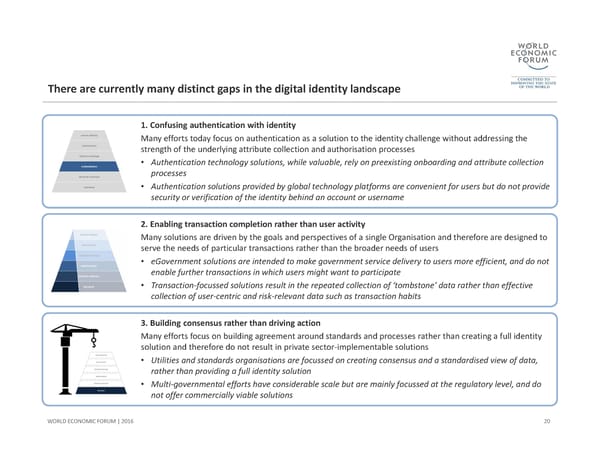There are currently many distinct gaps in the digital identity landscape 20 WORLD ECONOMIC FORUM | 2016 2. Enabling transaction completion rather than user activity Many solutions are driven by the goals and perspectives of a single Organisation and therefore are designed to serve the needs of particular transactions rather than the broader needs of users •eGovernment solutions are intended to make government service delivery to users more efficient, and do not enable further transactions in which users might want to participate •Transaction‐focussed solutions result in the repeated collection of ‘tombstone’ data rather than effective collection of user‐centric and risk‐relevant data such as transaction habits 1. Confusing authentication with identity Many efforts today focus on authentication as a solution to the identity challenge without addressing the strength of the underlying attribute collection and authorisation processes •Authentication technology solutions, while valuable, rely on preexisting onboarding and attribute collection processes •Authentication solutions provided by global technology platforms are convenient for users but do not provide security or verification of the identity behind an account or username 3. Building consensus rather than driving action Many efforts focus on building agreement around standards and processes rather than creating a full identity solution and therefore do not result in private sector‐implementable solutions •Utilities and standards organisations are focussed on creating consensus and a standardised view of data, rather than providing a full identity solution •Multi‐governmental efforts have considerable scale but are mainly focussed at the regulatory level, and do not offer commercially viable solutions
 A Blueprint for Digital Identity Page 20 Page 22
A Blueprint for Digital Identity Page 20 Page 22